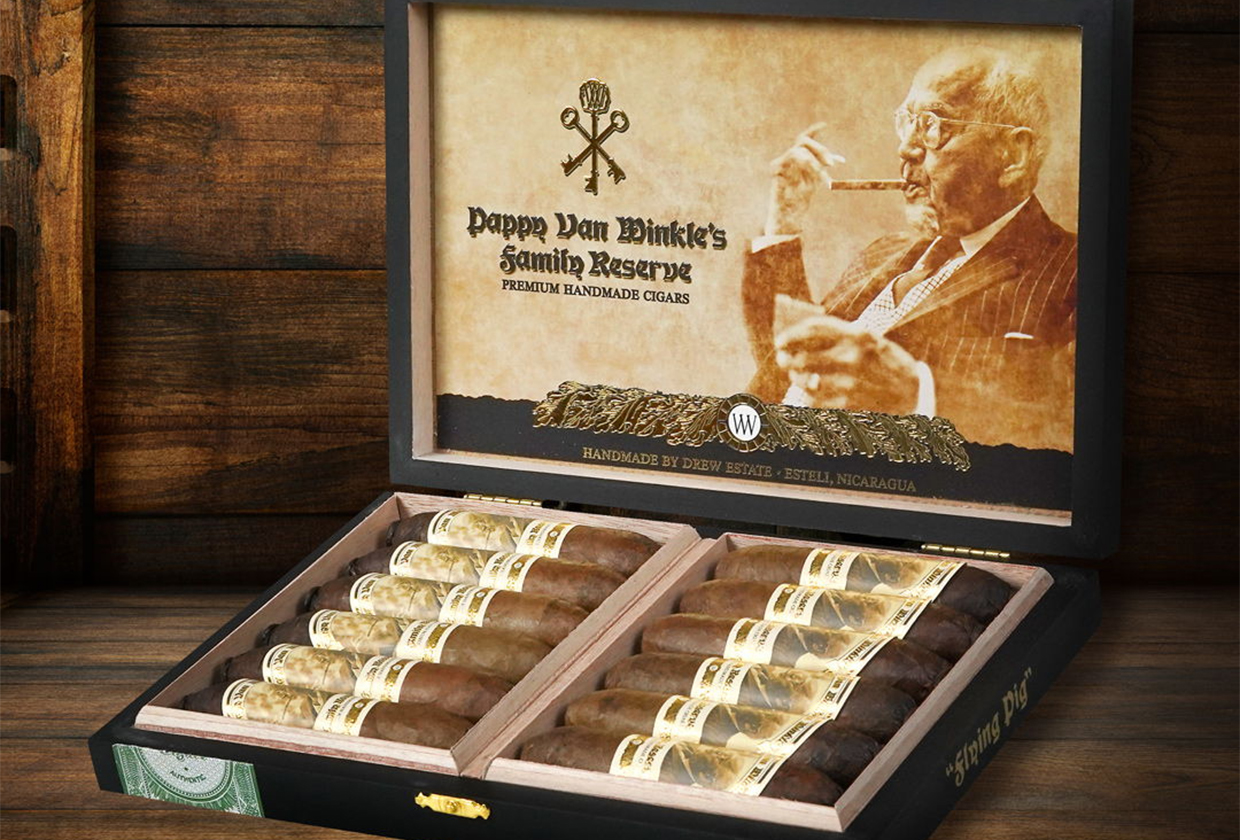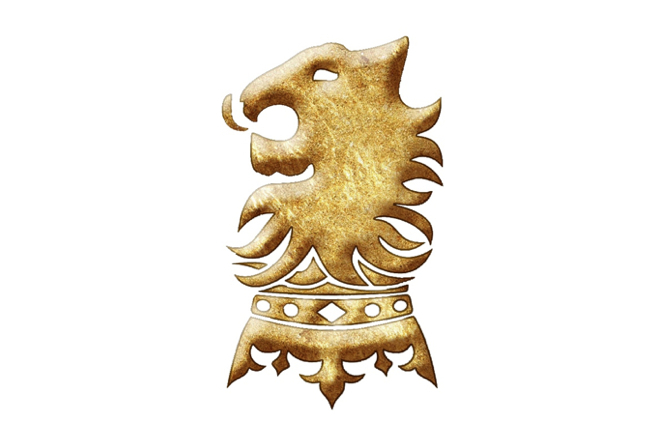In 2019, Drew Estate brought its Flying Pig vitola to the Pappy Van Winkle Barrel Fermented Cigars line, merging a distinct cigar size and one of the most distinctive lines of bourbon, and building on a project that has been hinted at since at least 2012 and on the market since the spring of 2015.
First, about the vitola. The Flying Pig size debuted in 2009 with the Liga Privada No. 9 Flying Pig, then in 2010 it was added to the Liga Privada T52 line. In 2011, it was announced that a bigger version would be released, the Liga Privada Único Serie Feral Flying Pig, still a 60 ring gauge perfecto but now measuring 5 3/8 inches long.
Another edition came along the following year, as in 2012 it was announced that the Undercrown line would get a Flying Pig, first for the Netherlands, and then appearing at Cigar Safari or charitable events, but not for sale until 2014. It would be joined by the MUWAT Kentucky Fire Cured Flying Pig.
The size isn’t completely unique though. Steve Saka, Drew Estate’s former ceo, found the shape when looking at a photograph of a cigar salesman’s size-selection case that dated back to 1895.
Like those other lines that use the Flying Pig vitola, this cigar is a perfecto that measures 3 15/16 inches long with a 60 ring gauge throughout most of the body, though as a perfecto it is tapered at the head and foot.
As for the partnership with Pappy & Company, the company that handles the non-whiskey products of the Pappy Van Winkle bourbon brand, it was announced in November 2014, with the obvious assumption that at some point the tobacco would have interacted with the barrels used to make the bourbon. Not the case, however, as the cigar was designed to be paired with Old Rip Van Winkle and Pappy Van Winke.
The line wouldn’t debut until April 2015, and along the way some notable changes were made, including the blend, the name, and the aged in barrels part. Specifically, the blend now featured a dual wrapper of Mexican San Andrés and Kentucky-grown tapa negra leaves, with the binder coming from Nicaragua and the filler a mix of tobacco from Kentucky and Nicaragua.
Jonathan Drew told halfwheel that the Kentucky grown leaves are grown in Hopkinsville where they are smoked in barns for 14 days before being transferred to St. James Parish, La., where they undergo a year of aging in spent whiskey barrels. After that process is complete, they are sent to La Gran Fabrica Drew Estate in Estelí, Nicaragua.
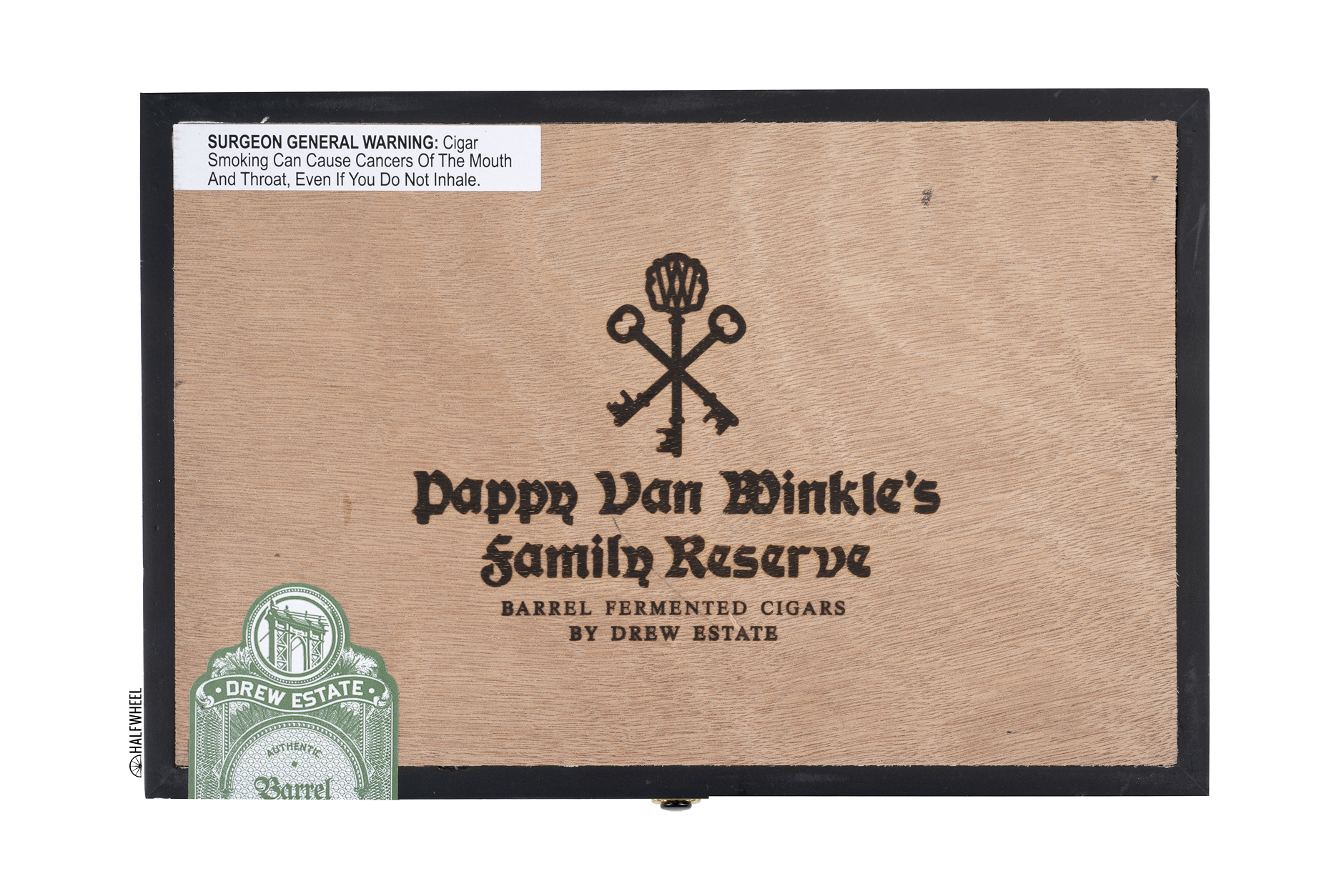
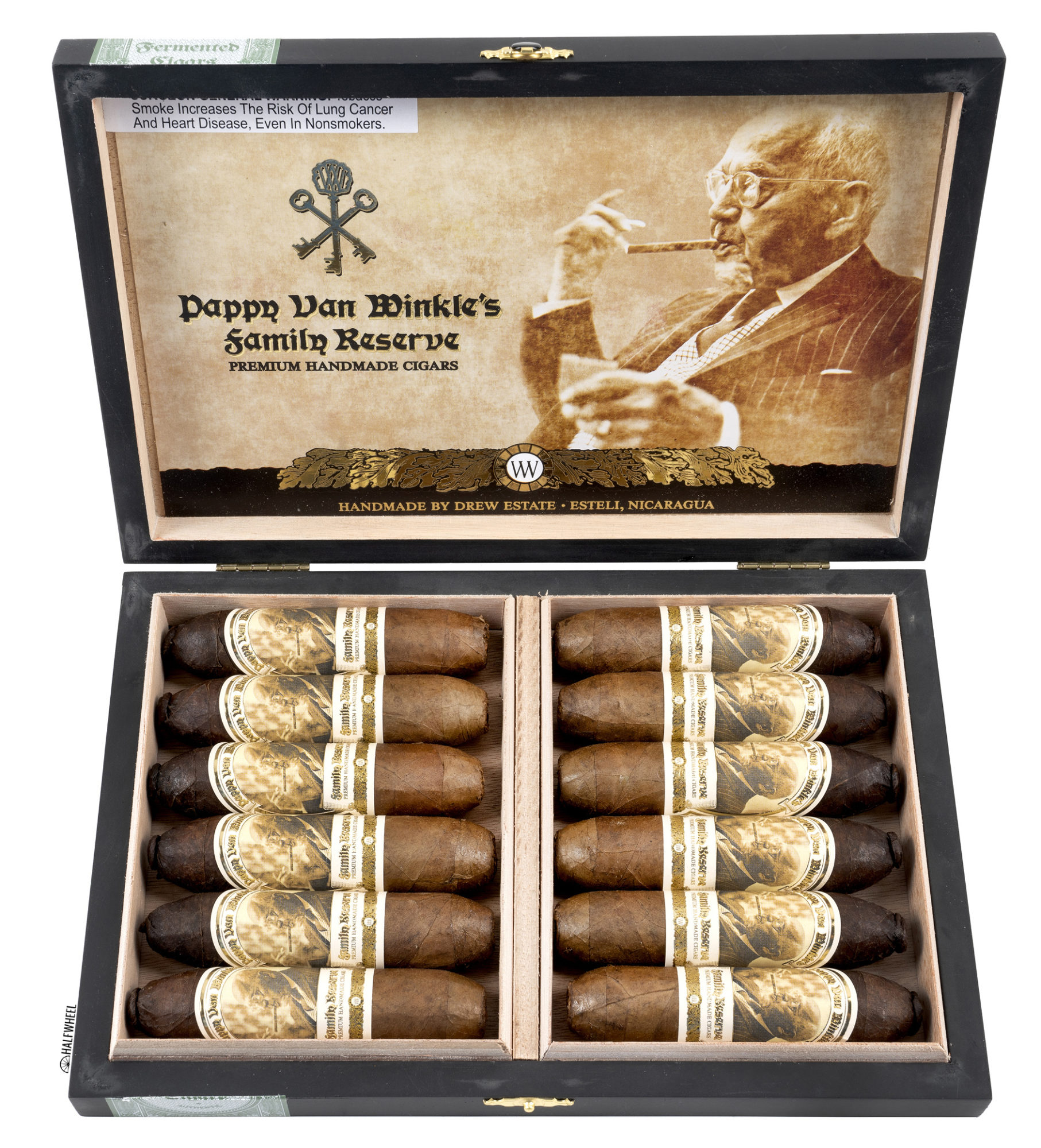
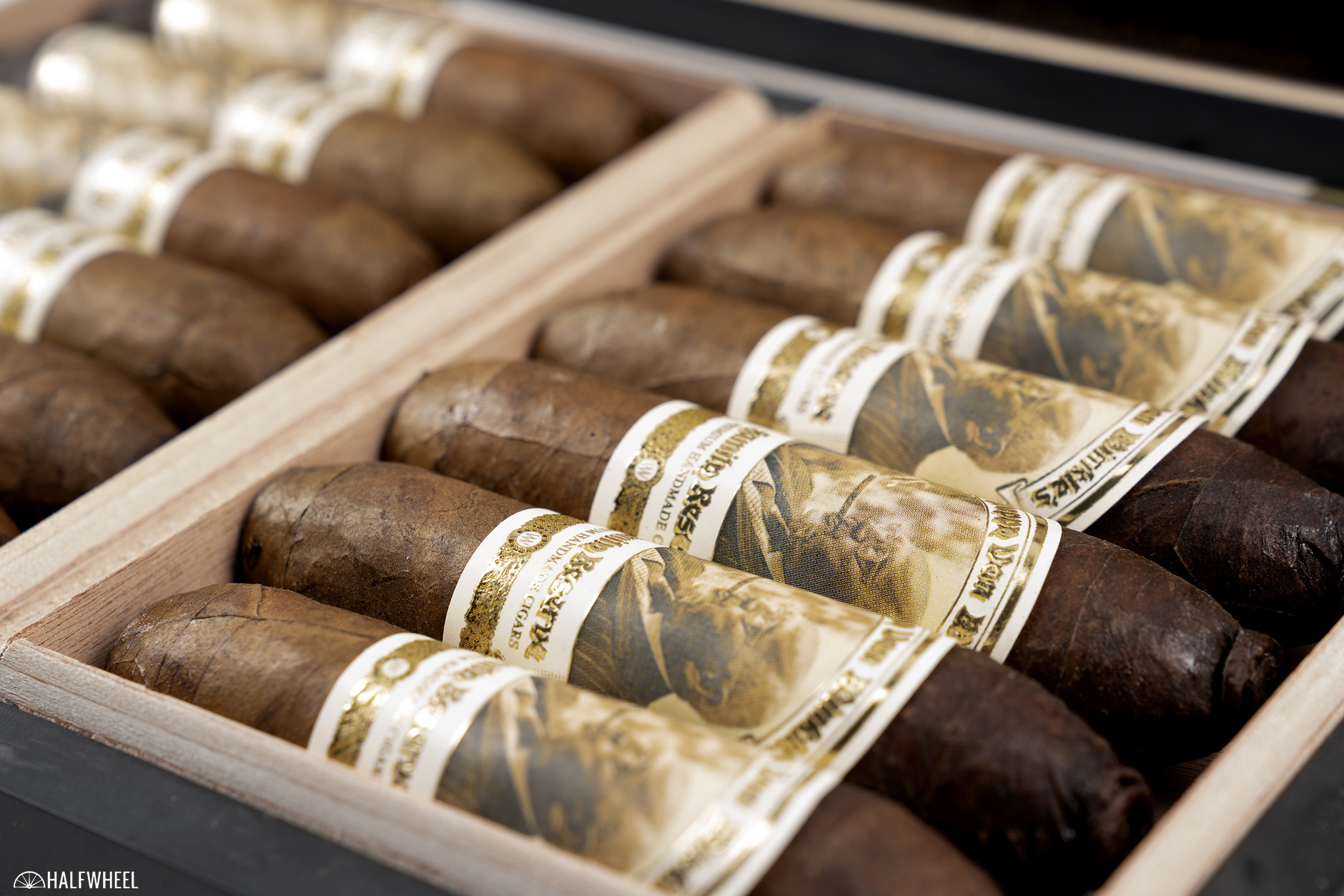
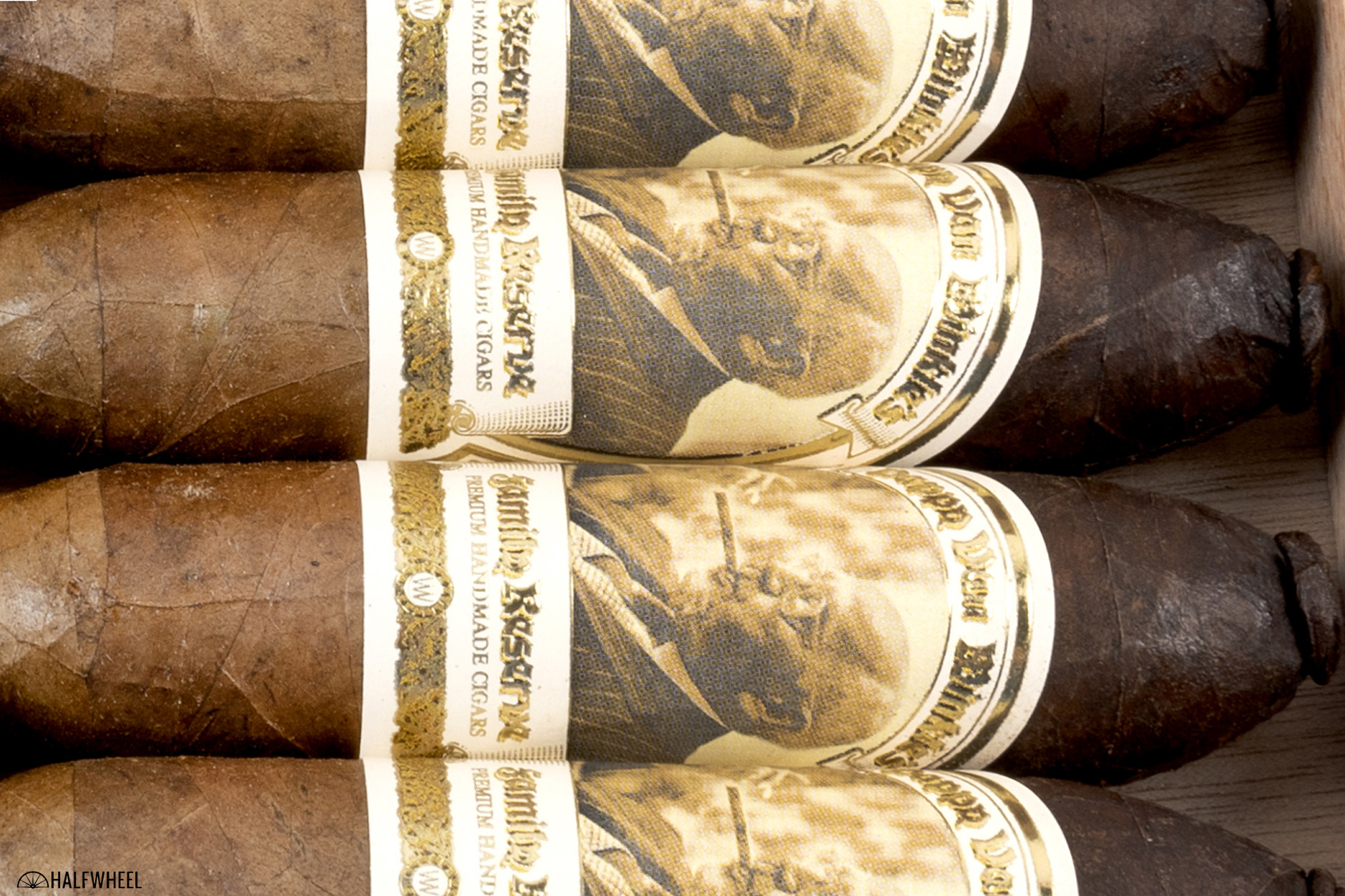
There are now four sizes, three of which are being sold in stores while the Flying Pig is only available through Pappy & Co.
- Pappy Van Winkle’s Family Reserve Barrel Fermented Cigars Robusto (5 1/4 x 52) — $14 (Box of 10, $140)
- Pappy Van Winkle’s Family Reserve Barrel Fermented Cigars Toro (6 x 52) — $15 (Box of 10, $150)
- Pappy Van Winkle’s Family Reserve Barrel Fermented Cigars Churchill (7 x 48) — $16 (Box of 10, $160)
- Pappy Van Winkle’s Family Reserve Barrel Fermented Cigars Flying Pig (3 15/16 x 60) — $15.98 (Box of 21, $191.80)
Additionally, there is another line bearing the Pappy Van Winkle name, the Pappy Van Winkle Tradition, which is also produced by Drew Estate and was first released in 2017. That cigar uses a completely different blend and dates back to one of the first blends that Willy Herrera created after joining Drew Estate, though it is also designed to pair with the famed Pappy Van Winkle bourbon. While it is offered in seven sizes, only five are for retail sale, and the Flying Pig is not part of that line.
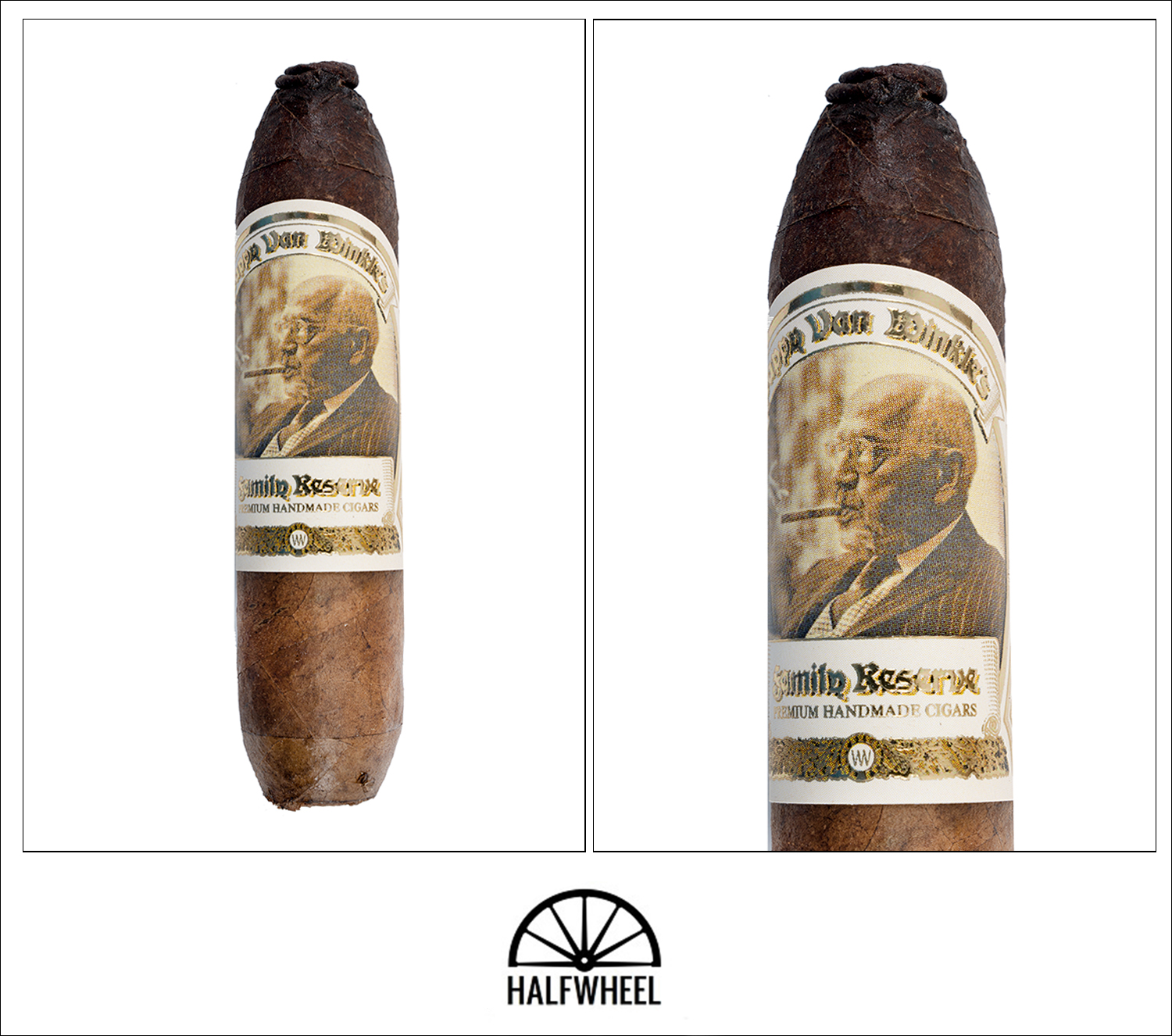
- Cigar Reviewed: Pappy Van Winkle’s Family Reserve Barrel Fermented Cigars Flying Pig
- Country of Origin: Nicaragua
- Factory: La Gran Fabrica Drew Estate
- Wrapper: Mexico (San Andrés) & U.S.A. (Kentucky Tapa Negra)
- Binder: Nicaragua
- Filler: Nicaragua & U.S.A. (Kentucky)
- Length: 3 15/16 Inches
- Ring Gauge: 60
- Vitola: Perfecto
- MSRP: $15.83 (Box of 12, $190)
- Release Date: November 2019
- Number of Cigars Released: Regular Production
- Number of Cigars Smoked For Review: 3
The Flying Pig vitola is immediately recognizable, complete with the tightly curled cinnamon bun on the head of the cigar. Yet while a few years back the vitola would have been the most notable thing on this cigar, here it’s not; it’s the wrapper. The variance in the color of the wrappers is quite striking; there is no doubt that there are two leaves on this cigar, with their meeting point obscured by the band. The upper half of the wrapper looks like a dark Nicaraguan leaf or Mexican San Andrés maduro, while the bottom looks much lighter, close to Ecuadorian habano. Then there’s the band: in terms of how much space it takes up and in terms of how high up it is; more on that in a moment. The cigar is rolled quite firmly, with just a touch of give at the very top of the head and the very tip of the foot. Other than the colors of the leaf, I can’t tell much about it without taking the band off, other than the seam is visible and there are a few small veins. While the cigar doesn’t emit a lot of aroma when it’s taken out of the cellophane, smelling the foot reveals a damp and peppery aroma that has a bit of fire-cured smokiness, as well as a woody aroma that reminds me of fresh cut firewood. That is even more pronounced on the cold draw, tasting like a freshly made marinade for beef jerky. It’s tangy enough to make me think about teriyaki, but also smoky enough to have me thinking of liquid smoke, Worcestershire sauce, or something that would be paired with black pepper, which is present but relatively tame. Also of note on the cold draw is the band hitting my lips when it is facing up. Were it not for the photos I would take it off immediately, but as such I turn it 90 degrees which helps a bit.
The Pappy Van Winkle Family Reserve Flying Pig starts with more of the marinade flavors that I got on the cold draw, though now with a good amount of black pepper. As would be expected, there is a good amount of smoke being produced by the cigar, while the draw is a touch open but not problematic. Retrohales offer tons of smoke and pepper for the nostrils, a rush hour both in terms of texture and content. As far as the fire-cured aspect, it’s present but not terribly overpowering without frequent retrohales. There’s a bit on the tongue as well, and certainly the more you think about and focus on it, the more prevalent it becomes, but it hardly stood out in the first sample I had, largely because I wasn’t looking for it. It’s a hearty, medium-plus to medium-full flavor profile, while strength is a few ticks below that, largely because I’m not feeling much from the cigar so far. Technical performance is quite good.
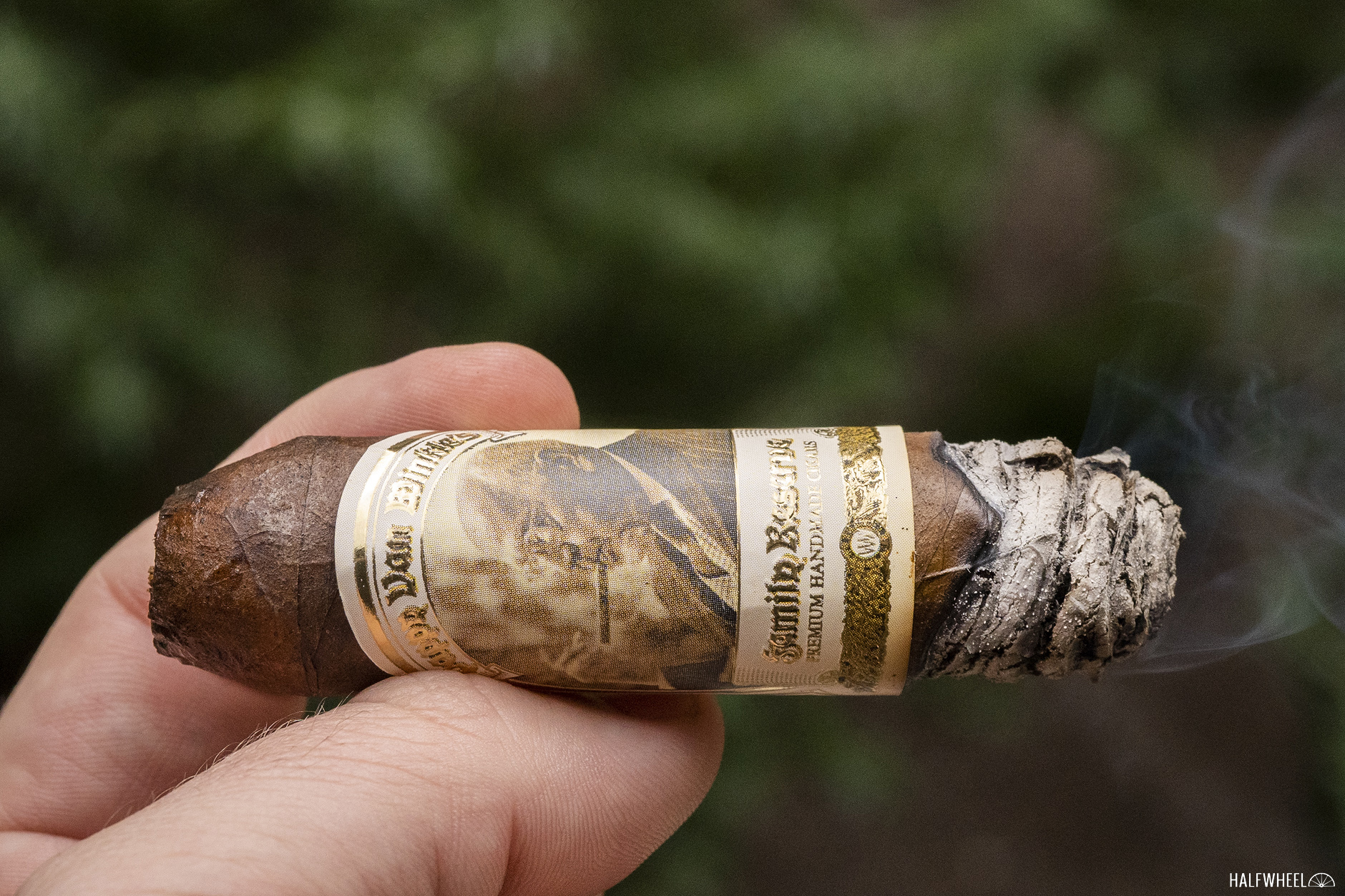
Thinking a bit more about the fire cured tobacco, I’m beginning to notice that it washes over the palate on exhales, an interesting experience as I would think it would be more upfront than that. There is a bit more smokiness to the flavor, much like I think of a barbecue joint with a smoker going, from which impressions of meatiness begin to appear. There’s some black pepper to be found, but what I find myself looking for now is sweetness, which I find in a tangy sauce note, almost obscuring itself except for quick tastes that are very enjoyable. The tail end of the second third sees the flavor get a bit rougher and more robust, leading to a bit of irritation in the back of the throat. The construction remains very good, smoke production is plentiful and combustion is problem-free. 
The Kentucky fire cured tobacco flavor has fully arrived at the start of the final third, no doubt due to the change of the wrapper and the proportions now much more in that leaf’s flavor. It’s the fullest body the cigar has offered yet, sitting solidly at medium-full if not all-out full, while strength has picked up a bit. The flavor is also a bit fuller and heavier on the palate, with more of a lasting tingle being felt in the mouth. The final third of the Pappy Van Winkle Family Reserve Flying Pig keeps some of the harshnesses, though it’s not consistent from cigar to cigar, and I begin to get a bit of red chili pepper bite on the tip of my tongue. As the thought of employing a draw poker to extend the smoking time of this cigar enters my mind, there’s still the kind of taste I associate with fire-cured tobacco: smokiness, a bit of bite, and a heavy sensation on the palate. While they were aged in bourbon barrels—although not those that once held Pappy Van Winkle—there is also a bit of that barrel bite here as well, which gets the tongue tingling as the final inch of the cigar begins to burn.
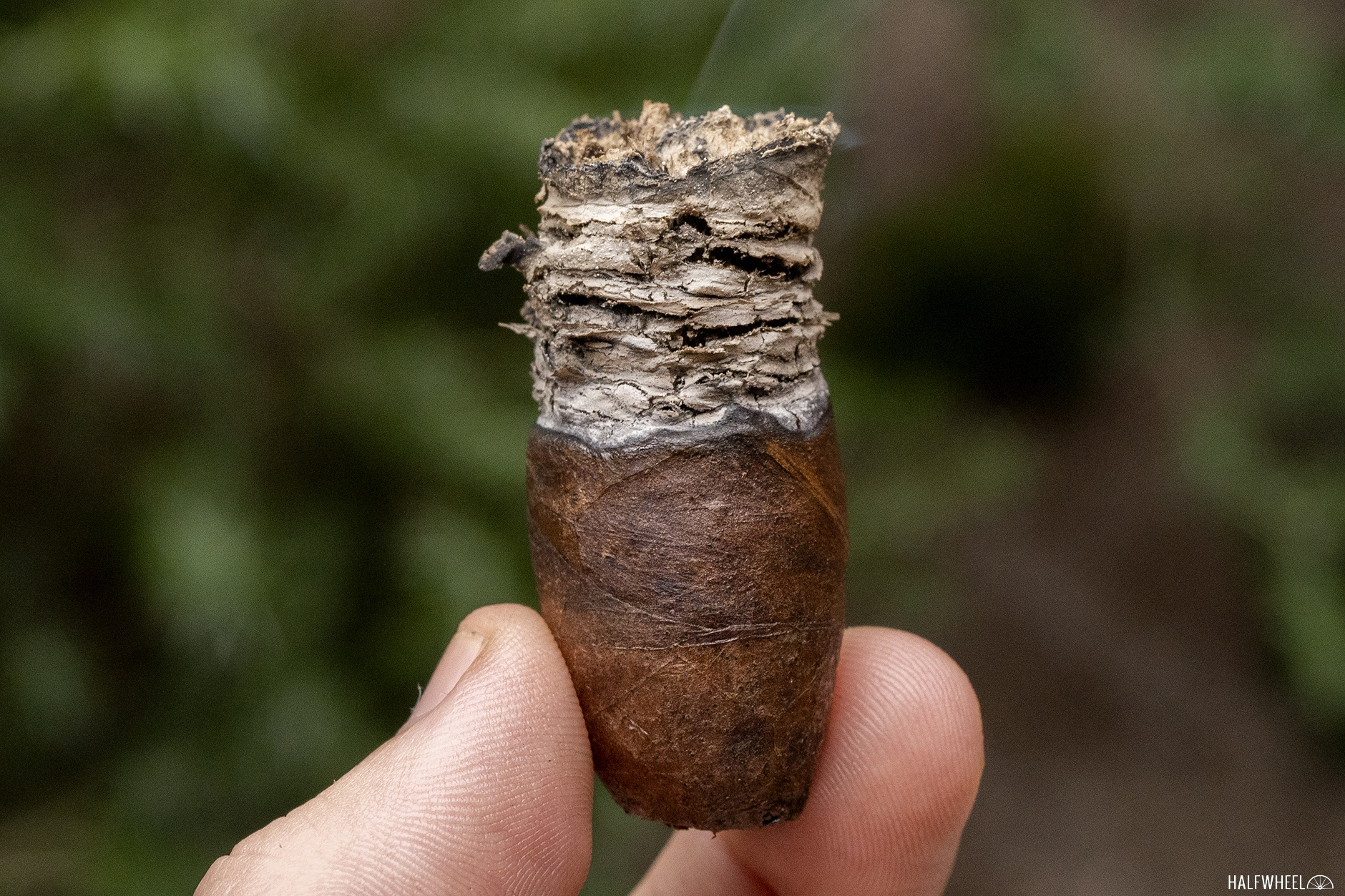
Final Notes:
- The wrapper design on the Pappy Van Winkle Family Reserve Flying Pig immediately reminded me of the Joya de Nicaragua Cabinetta line, which also uses two wrappers to create both visual contrast and a unique flavor experience.
- It’s about a 2-to-1 ratio between the lighter lower portion and the darker upper section of the wrapper, which one discovers by taking the band off prior to lighting the cigar.
- One sample had three distinct shades, as the tobacco that was used to wrap the foot is notably lighter than the rest of the bottom half of the cigar.
- If you want to see a video of the process that the Kentucky-grown tobacco undergoes, there is one available here.
- Removing the band of the first cigar took fractured the wrapper, removing just a small piece of tobacco below the midway point.
- The wrapper on the second cigar I smoked pretty much exploded not long after I lit the cigar. It didn’t ruin the experience, but it wasn’t terribly pretty.
- I was surprised not to find more of a nicotine buzz from this cigar, though I’m not complaining about it. It’s full flavored but not with the byproduct of being full strength.
- Drew Estate advertises on halfwheel.
- The cigars for this review were purchased by halfwheel.
- Final smoking time was one hour and 35 minutes on average, with one sample smoking very quickly at about one hour and 20 minutes.
- The only place to buy the Pappy Van Winkle’s Family Reserve Barrel Fermented Cigars Flying Pig is Pappy & Co.
While the Flying Pig vitola is seemingly the main draw of this cigar, the blend inside is the star of the show. The first two thirds of the cigar are where it shines brightest for me, as the Kentucky tobacco is more accent than dominant note, which is what it seems like in the final third. That allows the most depth and complexity, which in turn leads to the most enjoyment from the blend. While it's a fairly quick cigar to smoke, I also don't know that more would be better. The format lends itself to a seemingly ideal amount of flavor while still leaving room for more if wanted, but certainly won't leave the smoker feeling shortchanged. A very enjoyable cigar on its own and seemingly ripe for pairing with Pappy Van Winkle or your favorite spirit.

